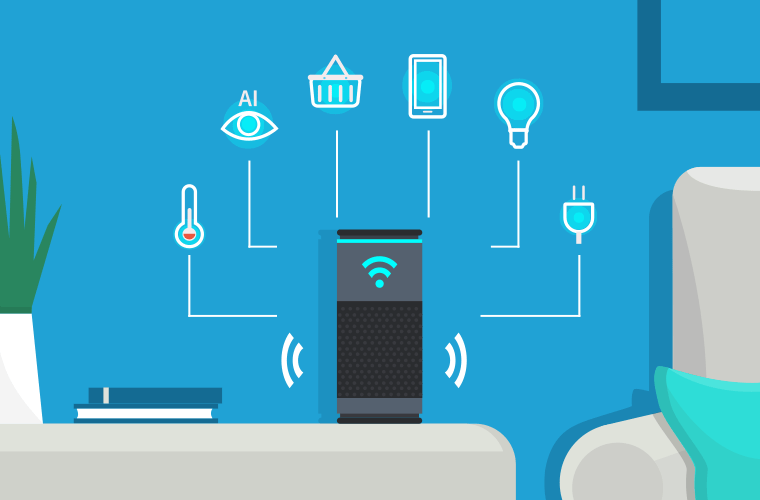The “Global Intelligent Lighting Controls Market: Focus on Component Types (Sensors, Ballasts and Drivers, Switches and Dimmers, among others) by Connection Types, by Light Source and by Applications – Analysis and Forecast (2018-2024)”report has been added to ResearchAndMarkets.com’s offering.
Increasing smart homes market along with customization benefits and continuously decreasing average selling price (ASP) of LED bulbs and drivers are some of the factors driving the growth of intelligent lighting control market.
The report is a compilation of different segments of the global intelligent lighting controls market including market breakdown by component type, connection type, light source, and application. The report also discusses in detail about the key participants involved in the industry.
In terms of revenue, the sensors segment held the major share in the global intelligent lighting controls market in 2017; whereas dimmers and switches segment is expected to increase with the highest CAGR in the coming years. The advancement in technology for dimmers & switches has helped to resolve the rising issue of energy crises. Sensors are the most important part in any intelligent lighting system and are used to detect and operate automatically according to the pre-defined conditions. The key sensors used in intelligent lighting industry are ambient light sensors, proximity sensors, occupancy sensors, photo sensors, and daylight sensors. Some of the companies are also inclining toward intelligent lighting controls with the use of gesture detecting sensors for gesture controls.
Among both the connection types used in intelligent lighting controls market, wired connection type held the higher market share in 2017 in terms of value. The wired technology has been more prevalent but with the recent development in Radio Frequency (RF) technologies, there’s an increase in the number of wireless installations worldwide. Wired technology based intelligent lighting systems can provide better control and flexibility with the use of additional electronics, which in turn increases the cost of the overall installation.
Among all the light sources where intelligent lighting controls are used, the LED segment held the highest market share in 2017 in terms of value. Widespread use of LED products in the developed regions had a tremendous impact on energy savings, thus, increasing the LED lighting market manifold since its inception. LEDs are also used for several non-conventional lighting purposes as in automobile lighting and their unidirectional feature enables them for use in aesthetic and architectural lighting purposes. These features give the LED lighting market an edge over traditional lighting markets. Organic light emitting diode (OLED) is the latest entrant in the lighting industry. OLED has enabled engineers to create flexible surfaces for lighting products thus, introducing a whole new segment in the lighting market. The technology is still in its nascent stage and is almost set for mass production.
Among all the applications wherein intelligent lighting controls are used, the commercial segment holds the highest market share in 2017 in terms of volume and value. Smart homes are accelerating the growth of the intelligent lighting controls market in residential application. Smart home is the ultimate solution for the consumer which brings numerous advantages with respect to energy and cost savings. Moreover, homes are considered to be intelligent’ enough to identify the family members and guests that can based on the biometrics technology. Majority of the companies operating in this space are already investing millions of dollars to integrate seamlessly the physical and digital world.
North America led the global intelligent lighting controls market in 2017 in terms of volume and value. Since energy performance contracts are becoming widespread in North America, specific Energy Service Companies (ESCOs) have been developed in the last few years to provide wide-ranging energy services to the owners of buildings. The services offered in a form of package, include equipment installations, technical evaluations, hazardous waste removal, billing, financing, energy monitoring and verification services. The growth of the North American intelligent lighting control market is actively supported by the installation of new intelligent lighting systems in the non-residential segment.
However, Asia Pacific is expected to grow with the highest rate during the forecast period. This is mainly due to low cost of consumer equipment in the region. Additionally, the rising trend of smart homes in the region is also supporting the growth of the Asia Pacific intelligent lighting controls market. China has a high rate of consumption and production of global lighting products. Within the lighting industry, intelligent lighting enterprises are gradually on the path of expansion which is also attracting many foreign market players for further investments. Additionally, the growth of green lighting LED lamps is rising in the China lighting industry, propelling the growth of the China intelligent lighting controls market.
The most often used strategy for developing a better hold on to the market has been product launches, followed by partnerships, joint ventures, and collaborations. Moreover, the company profile section includes highlights of significant information about the key companies involved along with their financial positions, key strategies, and developmental activities of recent years.
